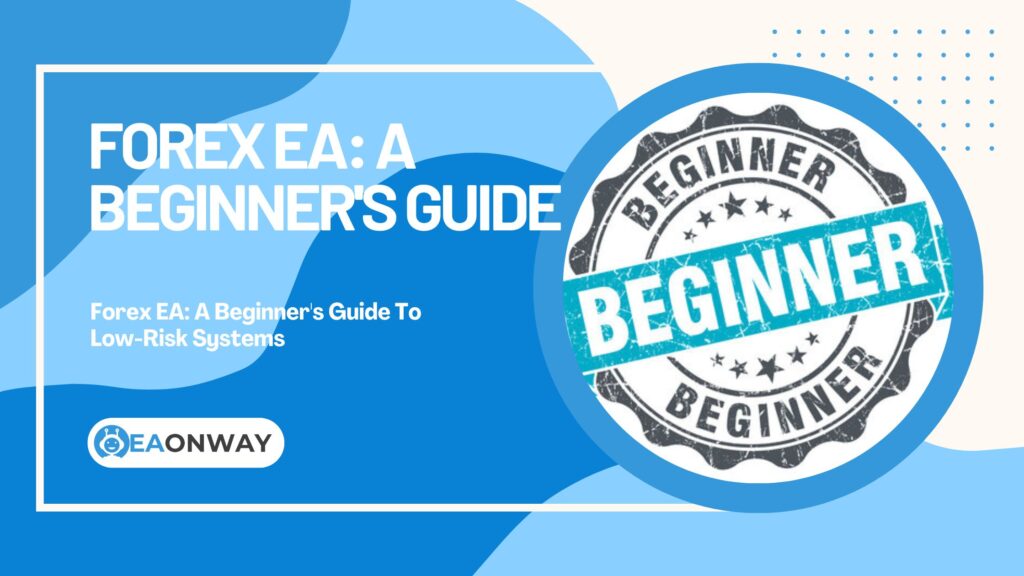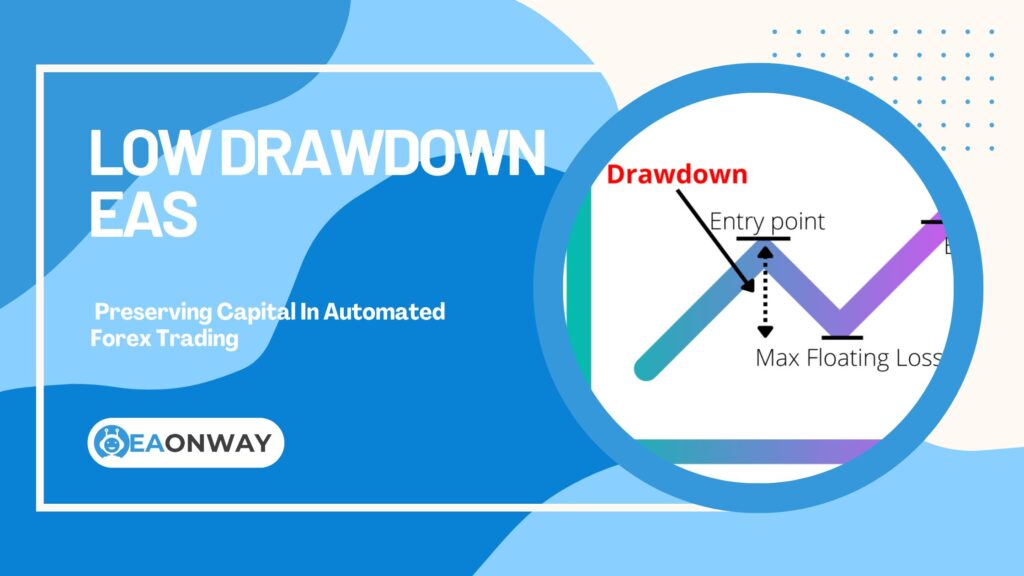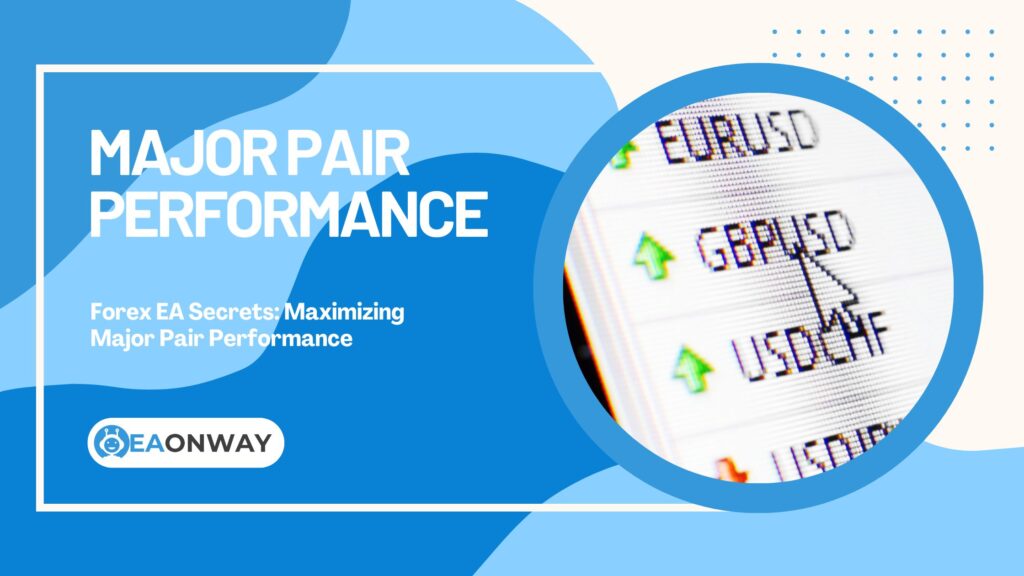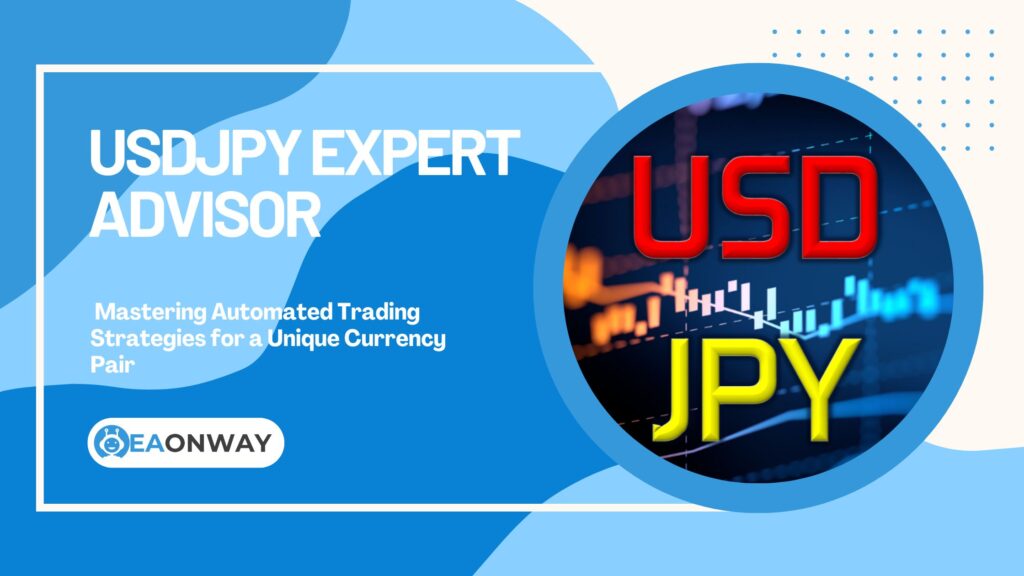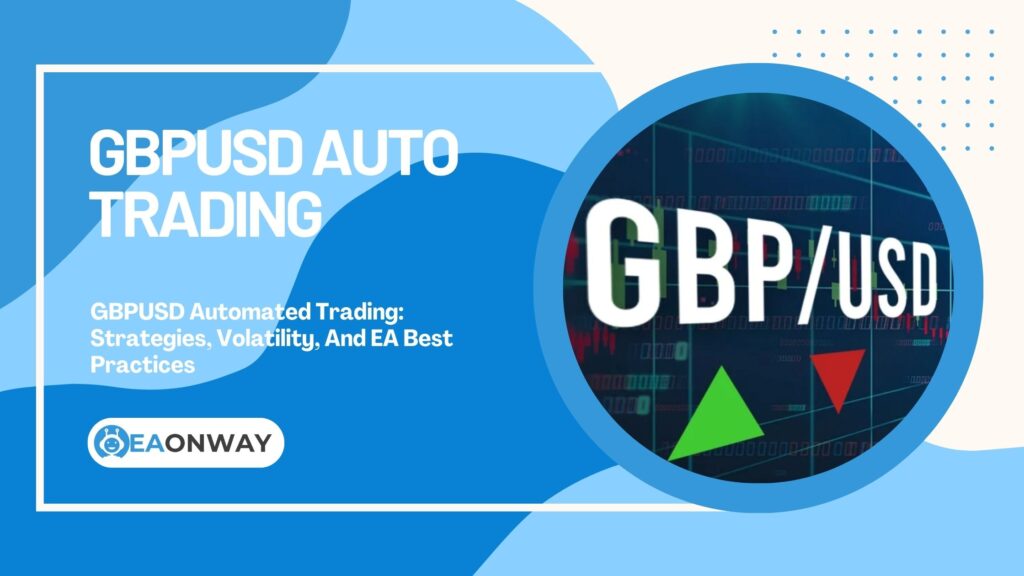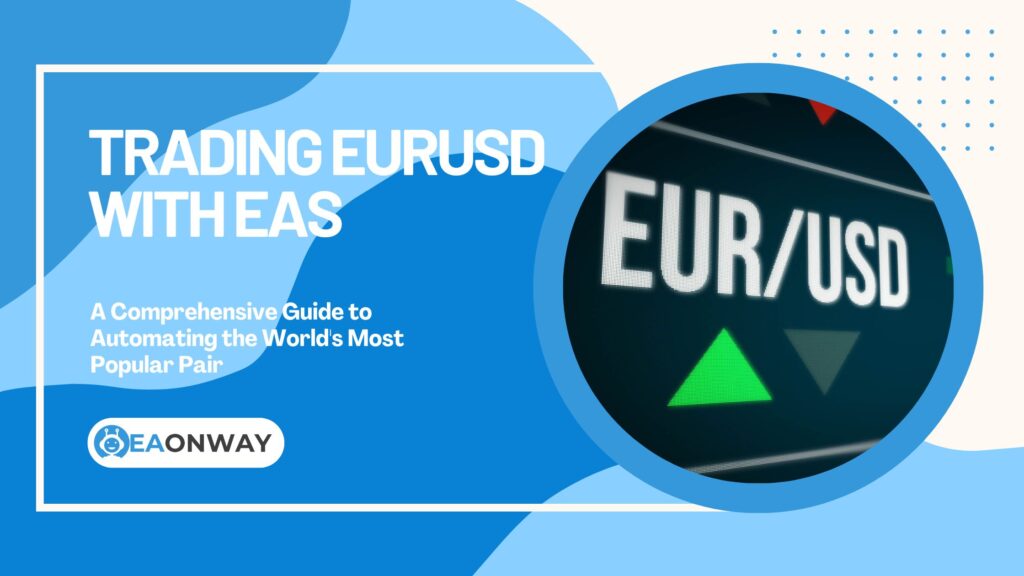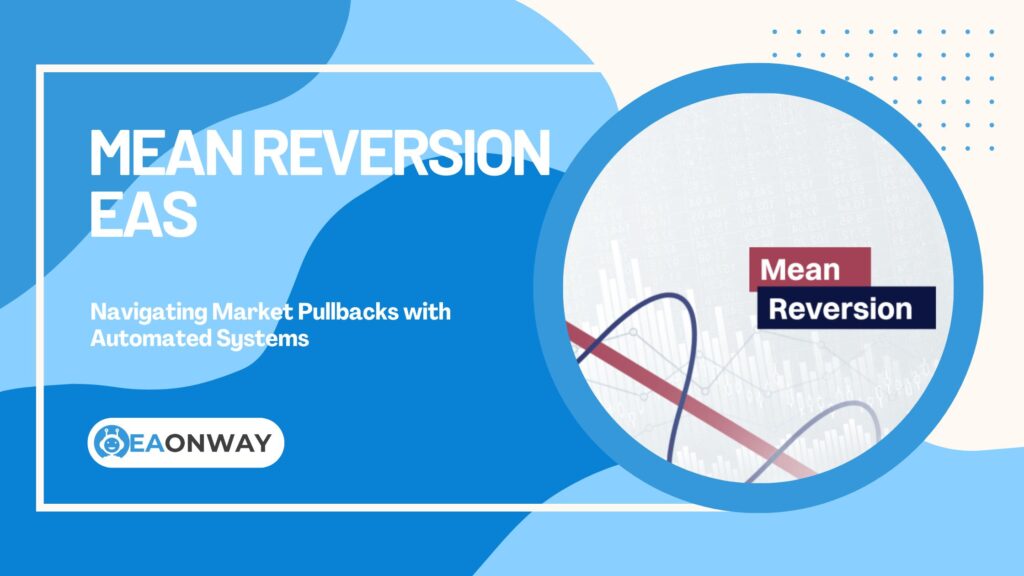Common EA Trading Strategies
Automated Index Trading: Unlocking Strategies With Expert Advisors
Automated Index Trading: Unlocking Strategies With Expert Advisors
Are you intrigued by the possibility of engaging with major stock market indices like the S&P 500 or FTSE 100 through automated systems? Automated index trading, utilizing tools known as Expert Advisors (EAs), presents a pathway for systematic market participation, but it’s a journey that demands thorough understanding and caution. Many individuals with demanding careers, from IT professionals to small business owners, seek efficient ways to interact with financial markets, and the concept of an “S&P 500 trading bot” or a “NASDAQ EA trading” solution can seem appealing. This article delves into the world of automated index trading with EAs, aiming to provide comprehensive knowledge, clarify how these systems function, and crucially, highlight the potential risks to help you sidestep false expectations and navigate this complex niche with informed awareness. We will explore how these algorithmic tools operate, what to consider when choosing one, and the critical role of risk management in any automated trading endeavor.
Key Takeaways: Automated Index Trading with EAs
For readers seeking a quick overview, here are the essential points about using Expert Advisors for automated index trading:
- Definition: Automated index trading involves using software programs (Expert Advisors or EAs) to execute trades on stock market indices based on pre-defined rules and strategies.
- How EAs Work: EAs analyze market data for indices like the Dow Jones or DAX, identify trading opportunities according to their embedded algorithms, and can automatically place and manage trades.
- Potential Benefits: Key advantages include emotionless trading, the ability to backtest strategies, continuous market monitoring (during active market hours for indices), and disciplined execution.
- Significant Risks: Major risks encompass over-optimization to past data, sudden market shifts rendering strategies ineffective, technical failures, and the potential for substantial financial loss. No EA guarantees profit.
- Selection is Crucial: Choosing an EA requires careful evaluation of its logic, transparency, performance history (with skepticism), and compatibility with your risk tolerance.
- Backtesting Importance: Testing an EA on historical index data (backtesting) is vital, but its results are not predictive of future success. Forward testing on a demo account is also recommended.
- Risk Management is Paramount: Implementing sound risk management practices, such as setting appropriate stop-losses and position sizes, is non-negotiable when using EAs for index trading.
Understanding Automated Index Trading and Expert Advisors
To navigate the world of automated trading systems for major indices, it’s essential to first grasp the core concepts. This involves understanding what automated index trading entails and the specific role Expert Advisors play within this framework.
What is Automated Index Trading?
Automated index trading is the practice of using computer programs to make and execute trading decisions on stock market indices. Instead of manually analyzing charts and placing orders for instruments like an S&P 500 CFD or a FTSE 100 tracker, the software, often referred to as a trading robot or an Expert Advisor (EA), handles these tasks based on a pre-programmed set of rules and algorithms. This approach allows traders to implement their strategies systematically, potentially across various major indices such as the NASDAQ, Dow Jones Industrial Average, or Germany’s DAX. The goal is often to achieve consistency and remove emotional biases from trading decisions, though it’s critical to understand this doesn’t eliminate risk. Automated portfolio rebalancing across indices can also be a feature of more advanced systems.
What is an Expert Advisor (EA) for Trading Indices?
An Expert Advisor (EA) for trading indices is a piece of software specifically designed to automate trading activities on financial instruments representing stock market indices. Most commonly, these EAs are developed for popular trading platforms like MetaTrader 4 (MT4) and MetaTrader 5 (MT5), using programming languages like MQL4 or MQL5 (MQL5 index trading development). The EA contains the trading logic—the rules that dictate when to buy, sell, or hold a position on a particular index. This logic can be based on various technical indicators, price patterns, or other quantitative trading strategies for indices. Essentially, an EA acts as your automated trading assistant, diligently following its programmed instructions.
How Do EAs Work for Stock Index Trading?
EAs for stock index trading operate by continuously monitoring price data and other relevant market information for the specified indices directly from your broker’s feed.
Here’s a simplified breakdown of their operation:
- Market Analysis: The EA processes incoming market data (like price quotes and indicator values) for the chosen index (e.g., S&P 500, DAX).
- Signal Generation: Based on its embedded trading strategy (e.g., a trend-following rule or a mean-reversion condition), the EA determines if the current market conditions meet the criteria for a trade entry or exit.
- Order Execution: If a valid trading signal is generated, the EA can automatically send an order to the broker to open, modify, or close a trade. This happens without manual intervention.
- Trade Management: Once a trade is open, the EA can manage it according to its programming. This might include setting stop-loss orders to limit potential losses, take-profit orders to secure gains, or employing trailing stops.
- Continuous Operation: EAs can run whenever the trading platform is active and connected to the market, allowing them to monitor opportunities even when the trader is not physically present, especially relevant for indices with varying market hours across global sessions.
It’s important to remember that the effectiveness of an EA is entirely dependent on the soundness of its underlying strategy and its ability to adapt to changing market dynamics, which is a significant challenge.
Exploring the Upsides of EA-Based Index Trading
While fraught with risks that must be understood, utilizing Expert Advisors for trading major stock market indices can offer several potential advantages for traders who approach it with knowledge and caution. These benefits often attract individuals looking for systematic and less time-intensive ways to engage with markets like the NASDAQ or FTSE 100.
What Are the Benefits of Automated Index Trading Using EAs?
Automated index trading using EAs offers several potential benefits, primarily centered around efficiency, discipline, and analytical capabilities. These can include:
- Emotionless Trading: EAs execute trades based purely on their programmed logic, removing the emotional interference of fear, greed, or impatience that can plague manual traders and lead to impulsive decisions.
- Backtesting Capabilities: Before risking real capital, EAs can be rigorously tested on historical price data for indices like the S&P 500 or Dow Jones. This backtesting process allows traders to evaluate how a strategy might have performed in the past, though past performance is not indicative of future results (Source: FINRA, Evaluating Past Performance).
- Speed of Execution: EAs can react to market changes and execute trades far faster than a human can. In volatile index markets, this speed can be crucial for entering or exiting positions at desired price levels.
- Discipline and Consistency: An EA will adhere strictly to its trading plan, ensuring that every trade is executed according to the pre-defined rules. This helps maintain discipline, which is often a challenge for manual traders.
- Time-Saving: Automated systems can monitor markets and manage trades around the clock (during active market hours for specific indices), freeing up the trader’s time from constant screen watching. This is particularly appealing for those with busy schedules.
- Diversification of Strategies: Traders can potentially run multiple EAs employing different strategies across various indices simultaneously, something that would be difficult to manage manually.
- Accessibility: Platforms like MetaTrader 4 and MetaTrader 5 offer a wide range of EAs, making automated trading accessible even to those without advanced programming skills, though building trading EAs for stock indices from scratch requires MQL5 index trading development expertise.
Despite these benefits, it’s vital to remember that they do not guarantee profitability. The success of an EA depends heavily on the quality of its strategy and ongoing market conditions.
Navigating the Inherent Risks of Automated Index Trading
While the allure of automated profits from an “S&P 500 trading bot” or a “DAX trading robot” can be strong, it’s crucial to approach EA-based index trading with a profound understanding of its substantial risks. Overlooking these dangers can lead to significant financial losses and disappointment.
What Are the Risks Involved in EA-Based Index Trading?
Engaging in EA-based index trading exposes traders to numerous significant risks that must not be underestimated. These include:
- Over-Optimization (Curve Fitting): This is a major pitfall where an EA is excessively tuned to perform exceptionally well on historical data. Such an EA may fail dramatically when exposed to live, different market conditions because it learned the noise of the past, not a robust underlying market principle.
- Sudden Market Changes (Regime Shifts): Financial markets, including major indices like the NASDAQ or FTSE 100, can experience sudden structural changes or “black swan” events. An EA programmed for specific past conditions may be unable to adapt, leading to large losses. For instance, strategies that worked in a low-volatility environment might falter during a market crisis.
- Mechanical and Technical Failures: EAs rely on technology. Power outages, internet connectivity issues, computer crashes, platform glitches, or problems with the Virtual Private Server (VPS) hosting the EA can prevent it from functioning correctly, potentially missing trades or failing to manage open positions.
- Broker-Related Issues: Differences in broker execution speeds, spreads, slippage, or data feed quality can cause an EA to perform differently with one broker compared to another, or differently from its backtest results. For example, a study by the Financial Conduct Authority (FCA) highlighted that execution quality can vary between brokers (Source: FCA, Asset Management Market Study – See sections on execution).
- Flawed Strategy Logic: The underlying trading strategy programmed into the EA might be fundamentally flawed or not robust enough for diverse market conditions. What seems logical in theory or in a limited backtest might not hold up in real-world trading.
- Lack of Adaptability: Most commercially available EAs are static; they don’t learn or adapt to evolving market dynamics unless manually updated by their developers. Markets are constantly changing, and a rigid strategy can quickly become outdated.
- Unrealistic Expectations and Scams: The allure of “get rich quick” with automated systems is strong. Many EAs are marketed with exaggerated claims of high returns and low risk. It’s crucial to be highly skeptical of such promises. The U.S. Securities and Exchange Commission (SEC) frequently warns about automated trading scams (Source: SEC, Automated Trading Software Investor Alert).
- Costs: Beyond the EA purchase price, consider VPS hosting fees, potential data feed subscriptions, and trading commissions/spreads, which can impact overall profitability.
- Complexity of Major Indices: Indices like the S&P 500 are influenced by a vast array of macroeconomic factors, company earnings, and geopolitical events that a purely technical EA might not account for.
Understanding these risks is the first step towards responsible engagement with automated index trading. No EA is a “set and forget” solution for guaranteed profits.
Why is Risk Management Crucial in Automated Index Trading?
Risk management is absolutely crucial in automated index trading because even the most sophisticated EA can experience losing trades or periods of significant drawdown. Without robust risk controls, a series of unfavorable market movements or a malfunctioning EA could quickly deplete a trading account. Effective risk management helps protect capital and ensures longevity in the markets.
Key aspects include:
- Position Sizing: Determining the appropriate amount of capital to risk on each trade relative to your account size. Risking a small percentage (e.g., 1-2%) per trade is a common guideline.
- Stop-Loss Orders: Pre-defined price levels at which a losing trade is automatically closed to prevent further losses. An EA should effectively manage stop-losses.
- Take-Profit Orders: Pre-defined price levels at which a profitable trade is closed to secure gains.
- Maximum Drawdown Limits: Setting an overall limit on how much your account can lose before you pause or re-evaluate the EA’s performance.
- Diversification (with caution): While EAs can trade multiple indices, ensure that the strategies are genuinely diverse and not simply multiplying exposure to the same underlying market risks.
- Regular Monitoring: Despite automation, EAs require monitoring to ensure they are functioning as expected and that risk parameters are being adhered to.
Failing to implement and adhere to strict risk management protocols is one of the quickest ways to experience substantial losses in any form of trading, especially automated index trading. The Bank for International Settlements (BIS) often discusses the systemic risks associated with increased automation in financial markets, indirectly highlighting the need for robust individual risk controls.
Choosing and Implementing Index Trading EAs
Selecting the right Expert Advisor for trading major indices like the Dow Jones or DAX, and then implementing it correctly, are critical steps that demand careful research and a methodical approach. It’s not just about finding an EA; it’s about finding one that aligns with your trading style, risk tolerance, and understanding.
How Do I Select an EA for Trading Major Indices?
Selecting an EA for trading major indices like the S&P 500, NASDAQ, or FTSE 100 requires due diligence and a critical eye. Avoid being swayed by hype or unrealistic profit claims. Consider these factors:
- Strategy Transparency: Understand the underlying trading logic. Is it a trend-following system, mean-reversion, breakout, or something else? While developers might not reveal every detail, you should have a clear idea of how the EA makes decisions. Avoid “black box” systems where the strategy is completely hidden.
- Verified Track Record (with scrutiny): Look for EAs with live trading records, preferably verified by third-party services like Myfxbook or FXBlue. However, be aware that even verified records can be manipulated or may not be representative of future performance. Analyze the drawdown, profit factor, and consistency over a significant period (at least 6-12 months, ideally longer).
- Comprehensive Backtesting Results: The vendor should provide detailed backtests across various market conditions and indices. Scrutinize the backtesting parameters: Was spread simulated realistically? Was commission included? How does it perform on different timeframes? Remember, backtests are not guarantees.
- Risk Management Features: Does the EA incorporate robust risk management tools? Can you easily set stop-loss, take-profit, and control position sizing? Are there options for maximum drawdown protection?
- Customization and Flexibility: Can you adjust key parameters to suit different indices or market conditions? Or is it a rigid system? Some flexibility can be beneficial, but too much might lead to over-optimization.
- Vendor Reputation and Support: Research the vendor. Are they established? Do they offer responsive customer support for setup and troubleshooting? Look for user reviews and feedback on independent forums, but be wary of overly positive or negative reviews that might be biased.
- Cost vs. Value: Price isn’t always an indicator of quality. An expensive EA isn’t necessarily better than a more affordable one. Focus on the features, performance (realistically assessed), and support relative to the cost.
- Compatibility: Ensure the EA is compatible with your preferred trading platform (e.g., MetaTrader 4 EAs for Indices, MetaTrader 5 EAs for Indices) and broker.
- Avoid “Holy Grail” Claims: Be extremely skeptical of any EA marketed as a foolproof way to make money or promising excessively high, consistent returns. Such claims are almost always misleading. The Commodity Futures Trading Commission (CFTC) often issues warnings about such fraudulent schemes in automated trading (Source: CFTC, Beware of Promises of Quick Profits from Automated Trading Systems).
Start by testing any chosen EA on a demo account for an extended period before committing real capital. This “forward testing” provides a more realistic assessment of its performance.
How Does Backtesting Work for Index Trading EAs?
Backtesting for index trading EAs is the process of simulating how an Expert Advisor’s strategy would have performed on historical price data of a specific stock index (e.g., S&P 500, DAX). It uses past market movements to estimate potential profitability, risk exposure (like maximum drawdown), and other performance metrics. The MetaTrader platform, for example, has a built-in Strategy Tester for this purpose.
Here’s how it generally works:
- Data Acquisition: Historical price data for the chosen index (e.g., NASDAQ historical data) is loaded into the testing software. The quality and accuracy of this data are paramount; using poor-quality data can lead to misleading results.
- Parameter Setting: The EA’s settings (input parameters, timeframe, initial deposit, leverage) are configured.
- Simulation: The testing software then “runs” the EA over the historical data period, simulating trades (buys and sells) as if they were happening in real-time, based on the EA’s logic.
- Report Generation: After the simulation, a detailed report is generated, showing metrics like total net profit, profit factor, maximum drawdown, number of trades, win rate, etc.
Importance and Limitations of Backtesting:
- Importance: Backtesting helps identify potentially flawed strategies, optimize parameters (cautiously, to avoid curve-fitting), and understand an EA’s historical risk/reward profile.
- Limitations:
- Past performance is not indicative of future results. Market conditions change.
- Spread and Slippage: Historical data often uses fixed or average spreads, while live trading involves variable spreads and potential slippage, especially during volatile news events affecting indices like the Dow Jones.
- Commission: Trading costs like commissions might not always be accurately factored in.
- Data Quality: Inaccurate or incomplete historical data can skew results.
- Over-Optimization: It’s easy to tweak EA settings to achieve stellar backtest results that won’t replicate in live trading.
Thorough backtesting is a necessary but not sufficient step. Always follow up with forward testing on a demo account and then cautious live trading with small amounts.
What Are Common Strategies for Automated Index Trading?
Automated index trading can employ a variety of strategies, often mirroring those used in manual trading but executed systematically by an EA. Some common approaches for major indices like the S&P 500, NASDAQ, Dow Jones, FTSE 100, or DAX include:
- Trend Following: These EAs aim to identify the prevailing trend in an index (up, down, or sideways) and take positions in the direction of that trend. They often use indicators like moving averages, MACD, or ADX. For example, an EA might buy the S&P 500 when it breaks above a key moving average and hold until the trend reverses.
- Mean Reversion: This strategy is based on the idea that index prices tend to revert to their historical average or mean over time. EAs using this approach look for overbought or oversold conditions (e.g., using RSI or Bollinger Bands) and trade against the recent short-term move, expecting a correction. This might be applied to an index like the DAX if it moves sharply away from its recent average.
- Breakout Strategies: These EAs identify key support and resistance levels or consolidation patterns (like channels or triangles) on index charts. They then place trades when the price breaks out of these levels, anticipating a continuation of the move. A NASDAQ EA might look for breakouts above recent highs.
- Range Trading: When an index is trading within a well-defined horizontal range, EAs can be programmed to buy near the support level and sell near the resistance level.
- News-Based Trading (Advanced & Risky): Some sophisticated EAs attempt to trade based on the immediate impact of major economic news releases that affect indices. This is highly complex and risky due to extreme volatility and potential for slippage.
- Grid Trading (Very Risky): This involves placing a series of buy and sell orders at predefined intervals above and below the current index price. While it can seem profitable in ranging markets, it carries substantial risk during strong, sustained trends, potentially leading to large drawdowns if not managed with extreme care.
- Arbitrage (Institutional Level): Exploiting tiny price differences of the same index or highly correlated instruments across different brokers or exchanges. This is typically the domain of high-frequency trading firms with sophisticated infrastructure, not retail EAs.
- Quantitative Trading Strategies for Indices: This is a broader category that involves using mathematical and statistical models to identify trading opportunities. This can include complex pattern recognition, statistical arbitrage, or factor-based investing models applied to indices.
It’s crucial to understand that no single strategy is foolproof or works in all market conditions. Many commercial EAs combine elements from different strategies. The key is to understand the logic of any index CFD automated trading system you consider and its inherent risks.
Which Platforms Support EAs for Index Trading?
The most popular platforms supporting Expert Advisors (EAs) for automated index trading are MetaTrader 4 (MT4) and MetaTrader 5 (MT5).
- MetaTrader 4 (MT4): For years, MT4 has been the industry standard for retail Forex and CFD trading, including indices. It has a vast user base and a massive library of readily available EAs (both free and commercial) developed using the MQL4 programming language. Many traders still prefer MT4 EAs for Indices due to its simplicity and the sheer number of existing tools.
- MetaTrader 5 (MT5): MT5 is the successor to MT4, offering more advanced features, additional timeframes, more built-in indicators, and the ability to trade a wider range of instruments, including exchange-traded stocks and futures (depending on the broker). EAs for MT5 are written in MQL5, a more powerful and object-oriented programming language. MQL5 index trading development allows for more complex algorithmic trading systems for major indices. While adoption was initially slower, MT5 is gaining popularity.
Other Platforms and Considerations:
- Proprietary Platforms: Some brokers offer their own proprietary trading platforms that may support automated trading through APIs (Application Programming Interfaces) or built-in scripting languages. These are less common for off-the-shelf EAs but can be used for custom algorithmic index trading.
- cTrader: Another platform known for its depth of market (DOM) features and cAlgo for developing automated trading robots (cBots).
- NinjaTrader: Popular among futures traders, it also supports automated strategy development and execution.
- Python/R with Broker APIs: More advanced users and quantitative traders might use programming languages like Python or R, connecting to broker APIs to implement their custom automated index trading strategies.
When choosing a platform, consider its ease of use, the availability of EAs for your chosen indices (like a specific S&P 500 trading bot or FTSE 100 EA), backtesting capabilities, and compatibility with your broker. For most retail traders looking to use pre-built EAs, MetaTrader 4 and MetaTrader 5 remain the primary choices.
Final Thoughts on Automated Index Trading
Automated index trading with Expert Advisors offers a technologically advanced way to engage with major stock market indices. The potential benefits, such as emotionless execution, systematic strategy implementation, and time-saving, are certainly attractive, particularly for individuals with busy lives seeking efficient trading methods. However, these advantages must be weighed carefully against the very significant and multifaceted risks involved.
The allure of a “Dow Jones automated strategy” or a “NASDAQ EA trading” solution that generates effortless profits is a dangerous misconception. Success in this field, if attainable, requires deep understanding, diligent research, continuous learning, and an unwavering commitment to rigorous risk management. Over-optimization, sudden market shifts, technical failures, and the inherent unpredictability of financial markets mean that no EA can be a “set and forget” path to wealth. Always approach claims of high, consistent returns from any automated trading systems for major indices with extreme skepticism. Your focus should be on education, understanding the mechanics, and preserving your capital.
Important Risk Warning
The information provided in this article is for educational and informational purposes only and does not constitute financial or investment advice. Trading Forex, CFDs, and other financial instruments, including automated index trading with Expert Advisors (EAs), carries a high level of risk and may not be suitable for all investors. There is a substantial risk of losing all of your invested capital.
You should not invest money that you cannot afford to lose. Before deciding to trade, you should carefully consider your investment objectives, level of experience, and risk appetite. Be aware of all the risks associated with trading and seek advice from an independent financial advisor if you have any doubts. EaOnWay.com does not provide investment advice and is not responsible for any trading losses you may incur. Past performance of any trading system or methodology is not indicative of future results.
-
Forex EA: A Beginner’s Guide To Low-Risk Systems
-
No DLL EA: Security, Portability, And Trust Benefits in Forex Trading
-
The Advantage of Forex EAs with Source Code: Unlocking Customization, Transparency, and Learning
-
Prop Firm Challenges: Using EAs For Success Guide
-
Verified EA Performance: Track Records And Audits Explained
-
Low Drawdown EAs: Preserving Capital In Automated Forex Trading
-
Forex EA Secrets: Maximizing Major Pair Performance
-
Gold Trading EAs Uncovered: Automating Your XAUUSD Strategy
-
USDJPY Expert Advisor: Mastering Automated Trading Strategies for a Unique Currency Pair
-
GBPUSD Automated Trading: Strategies, Volatility, And EA Best Practices
-
Trading EURUSD with Expert Advisors: A Comprehensive Guide to Automating the World’s Most Popular Pair
-
Mean Reversion EAs: Navigating Market Pullbacks with Automated Systems

